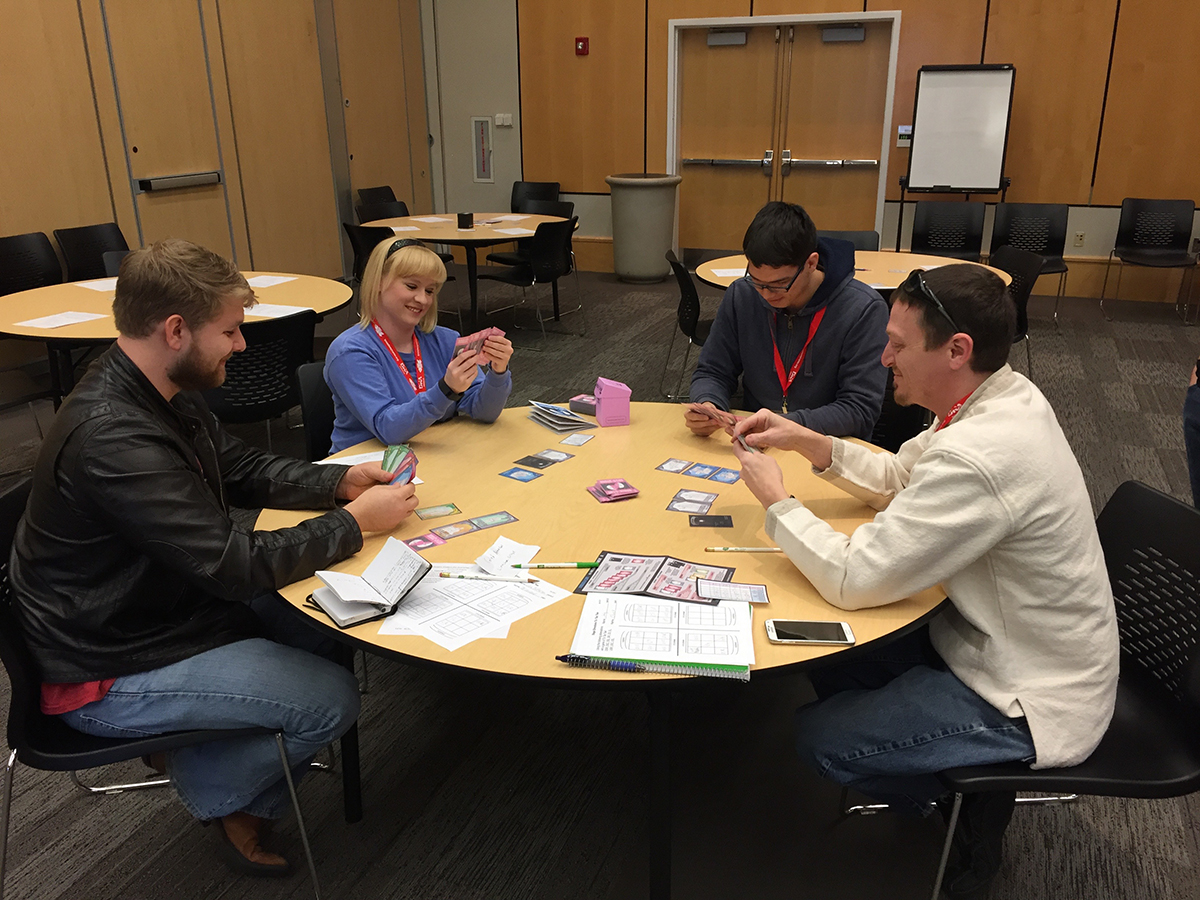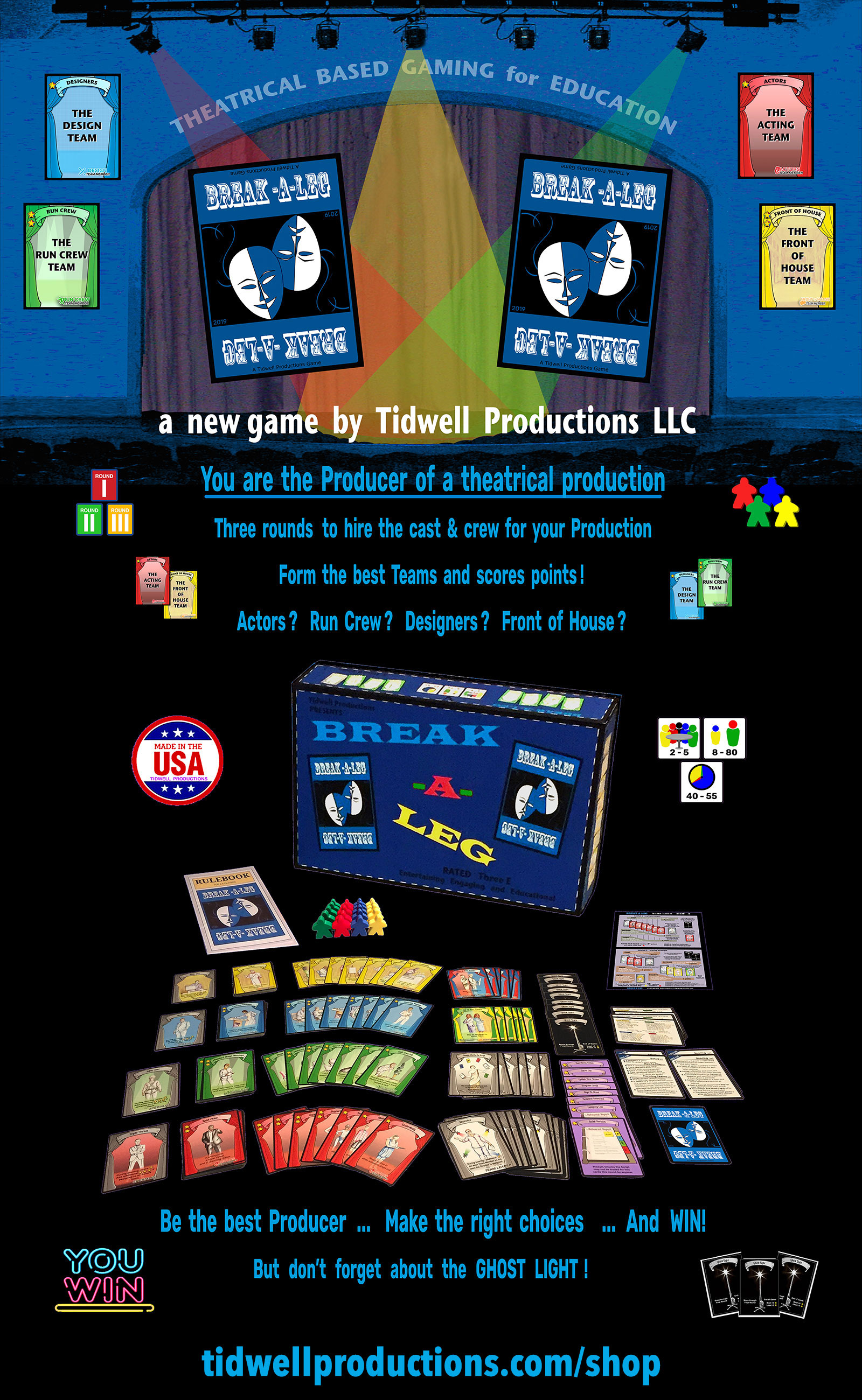Balancing Academics and Fun
Hello all, this video released July 8, 2020 addresses the academic aspects we focused on while designing our newest game. Check out the accompanying article, after the video!
Our new game, Break-A-Leg, was developed with two major goals in mind. First is for the gaming community: it was designed to be an exciting and action-packed pick-and-pass game that had easy to learn rules that could be utilized by experienced game players to produce a challenging and competitive experience. And this it has accomplished through significant playtesting and focused revisions.
The second important purpose, and the focus of this discussion, is its appeal and compatibility with academic needs. Originally conceived by Jody Tidwell as a simple concept of collecting cards to spell THEATRICAL PRODUCTION, it morphed through multiple revisions to a game that exposes the average person into the world of theatrical productions, personnel, and departments required to accomplish the simple goal of “Putting on a Show”
 By starting with simple gaming mechanics like picking & passing, collecting & formation of teams, and card
availability recollection, the game requires a player to both understand the basic building blocks, theatre personnel,
as well as the need to assemble those selected personnel into complete teams to score the most points.
By starting with simple gaming mechanics like picking & passing, collecting & formation of teams, and card
availability recollection, the game requires a player to both understand the basic building blocks, theatre personnel,
as well as the need to assemble those selected personnel into complete teams to score the most points.
From an academic point of view, this requires a student to recognize the personnel titles of jobs commonly found on each of the four teams required for a successful production. After playing a few games, the player instinctively begins to associate job titles with areas of focus and teamwork. More importantly, it reinforces the diversity of jobs found in the theatre as well as the expertise required to produce a finished show.
The academic setting has a number of constraints not found in casual tabletop gaming. While an evening of gaming has random start and stop times and can be interrupted by various distractions, the academic classroom is structured for a set time length and a specific start and stop time for that class. With these limitations in mind, and repeated playtesting, an average play time for novices was clocked at 40 to 50 minutes with experienced players completing the three rounds in 20 to 30 minutes. Both novice and experienced scenarios fit well with the 50-minute or 75-minute class sessions common at institutions. In fact, I have found that experienced players in the classroom can zoom through two full games in a class period.
Besides becoming familiar with jobs titles and team structure, students have the benefit of interaction with a small group in the class and allows them to learn each other’s name, have a common positive class experience, and help each other to compose teams to complete the game. Frequently, the game is introduced and played early in the semester which both introduces the class to one another as well as the scope of the class.
Finally, they get a chance to learn a little bit of lore and common practices found in theatre companies such as the ghost light, specialists in an area, the contributions of a director to a team, and the character of Thespis.
While most of this is unimportant to an experienced gamer, we have found that they too experience many of the academic goals, without it affecting their enjoyment of the game. Happy gaming.
More in this series
Gaming in the Classrom
by Jody Tidwell - July 5, 2020
Alternative teaching methods to the standard lecture series.Break a Leg. The Theatrical Card Drafting Game.
Break a Leg is the new fast-paced card drafting game from Tidwell Productions. Take on the role of a theatrical producer and hire the best cast, creative, and crew, and foil the plans of your opposing producers! Buy Now on the Tidwell Productions Shop!

